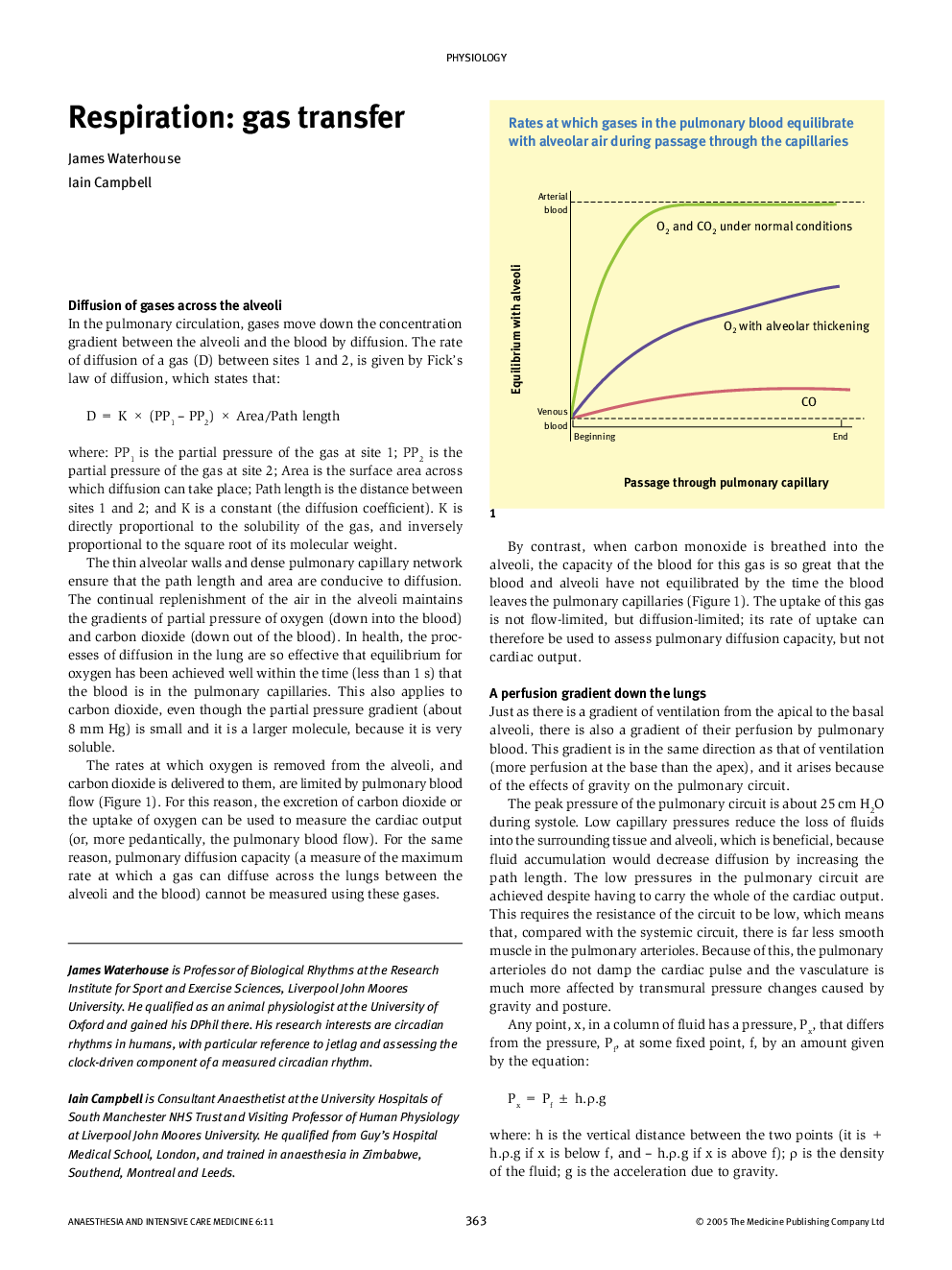| Article ID | Journal | Published Year | Pages | File Type |
|---|---|---|---|---|
| 9089447 | Anaesthesia & Intensive Care Medicine | 2005 | 4 Pages |
Abstract
Oxygen and carbon dioxide move passively between the alveoli and the pulmonary blood down concentration gradients, as described by Fick's law of diffusion. Lungs are thin enough and offer a sufficiently large surface area for equilibrium to be achieved well before the blood has left them. As a result, the exchange of these gases is normally limited by the cardiac output. Both ventilation and perfusion of the lungs show gradients in the upright individual, with lower values at the apex than at the base. These gradients are caused by gravity, though the details of these effects differ between ventilation and perfusion. There is a ventilation-perfusion gradient down the lung, with the highest values at the apex; apical alveoli are over-ventilated and basal ones over-perfused. Such imbalances are normally minimized by local reflexes involving airway constriction (apex) and vascular constriction (base). One of the main functions of haemoglobin is to transport oxygen from the lungs to the tissues. The properties of this molecule are such that: small falls in the partial pressure of alveolar oxygen do not reduce the saturation of blood leaving the lungs; increased release of oxygen to the tissues is accomplished with small falls below the normal partial pressure of oxygen; and raised acidity and temperature in exercising tissues promote oxygen unloading. Haemoglobin is also involved in the carriage of carbon dioxide, directly (by the formation of carbaminohaemoglobin) and indirectly (by acting as a buffer for hydrogen ions produced during the formulation of carbaminohaemoglobin and by dissociation of carbonic acid formed at the erythrocyte membrane).
Related Topics
Health Sciences
Medicine and Dentistry
Anesthesiology and Pain Medicine
Authors
James Waterhouse, Iain Campbell,
